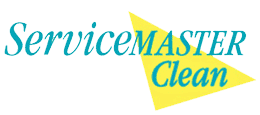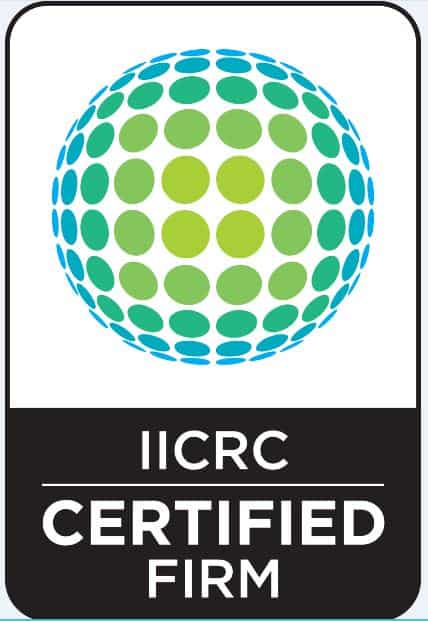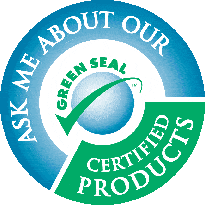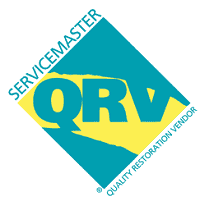Chicago is home to some extreme weather conditions.
From heavy lake-effect snow in winter to drenching summer rains, the risk of experiencing water damage due to a roof leak is very real.
Here at ServiceMaster of Lake Shore, we’ve been providing water damage restoration services for more than 30 years, and we’ve compiled our top tips into this helpful blog.
Key Takeaways
- Roof water damage in Chicago can stem from exterior issues like ice dams from freeze-thaw cycles, heavy storms, aging shingles, clogged gutters, low-slope roofs, or damaged flashing. Interior factors such as poor attic ventilation, inadequate insulation, leaky plumbing or HVAC systems, and lack of maintenance can also contribute, often turning small problems into costly repairs.
- As soon as you notice a roof leak, stay safe by avoiding hazards, contain the water, move belongings, and find the source if you can. Use a temporary patch only if it’s safe, then call a professional roofing contractor for permanent repairs.
- Call ServiceMaster of Lake Shore for Chicago water damage repair services you can count on: (312) 707-8597.
What to Do When Your Roof Is Actively Leaking
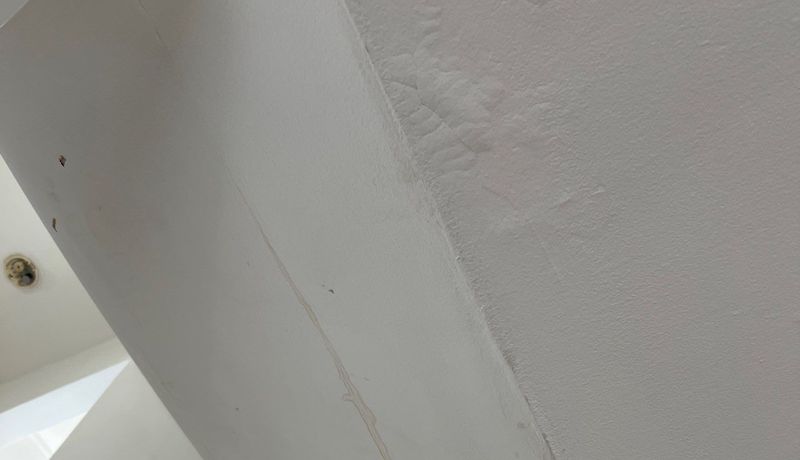
- Stay Safe: Stay out of rooms with sagging ceilings or active dripping near electrical fixtures.
- Contain the Water: Use buckets, towels, or plastic sheeting to collect dripping water and prevent more extensive damage.
- Protect Belongings: Move furniture, electronics, and valuables away from the affected area to keep them safe from water damage.
- Find the Source: Head to the attic with a flashlight and look for damp insulation, water stains, or sunlight through the roof boards. Trace water trails back to their highest visible point.
- Temporary Patch (If Safe): Use roofing tape, a tarp, or sealant to cover the area with the leak until professionals arrive.
- Call a Roofing Professional: Schedule an inspection and repairs as soon as possible.
How to Address Lingering Water Damage
Once the immediate threat is addressed, it’s time to focus on cleanup and restoration.
- Document the Damage: Take some photos and videos of the damaged area. You’ll need these to support your insurance claim.
- Remove Standing Water: Use towels, mops, or a wet/dry vac to eliminate excess water in the area.
- Dry Out the Area: Open windows if the weather is dry, and set up fans and dehumidifiers to circulate air and promote drying.
- Inspect for Mold and Mildew: Check ceilings, insulation, and drywall for signs of mold growth, which can begin within 24 to 48 hours of water exposure.
- Call ServiceMaster of Lake Shore: Restoration professionals can prevent mold growth, address structural issues, and ensure thorough cleanup and drying. If you’re in the Chicago area, contact ServiceMaster of Lake Shore for expert help: (312) 707-8597.
- File Your Insurance Claim: Use documentation and keep records of all repairs and costs to streamline the insurance claims process. If you need help with your insurance claim, ServiceMaster of Lake Shore is here for you.
Maintenance Tips to Prevent Future Damage
- Schedule Regular Roof Inspections: Have a professional inspect your roof at least once a year and after major storms.
- Clean Gutters and Downspouts: Remove debris regularly to ensure proper water flow.
- Maintain Flashing and Seals: Check around chimneys, vents, and skylights for signs of wear and reseal as needed.
- Improve Attic Ventilation: Ensure proper airflow to prevent condensation buildup.
- Upgrade Insulation: Proper insulation can help maintain consistent roof temperatures and prevent ice dams.
- Trim Overhanging Branches: Prevent damage from falling branches and reduce debris accumulation on the roof.
ServiceMaster of Lake Shore is Here to Help You Address Roof Water Damage!
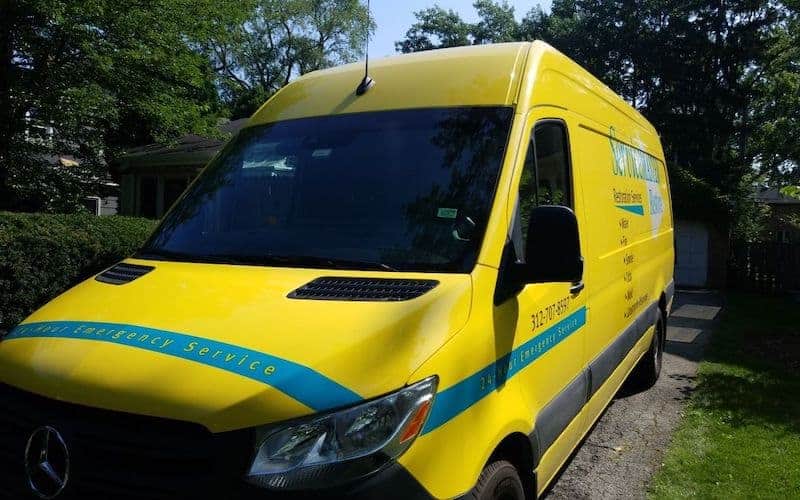
Roof water damage is a serious issue that requires immediate attention.
At ServiceMaster of Lake Shore, we’re here to help you address roof water damage when it happens and prevent it from occurring in the future.
Give us a call today to learn more about our services or request your quote:(312) 707-8597.
FAQs
How can I tell if my roof is leaking?
Look for water stains on ceilings, walls, or in the attic. A musty odor or visible mold can also signal a leak.
Will insurance cover water damage on the roof?
It completely depends on your policy and the cause of the damage. It’s important to review your policy and contact your insurance provider promptly.
Are roofers responsible for leaks?
Generally, the answer is no – unless they’ve installed the roof improperly. Usually, normal wear and weather damage make a roof leak the homeowner’s responsibility.
Why is roof water damage more common in Chicago homes?
Chicago’s freeze-thaw cycles, heavy storms, and aging housing make roofs particularly vulnerable to water damage.
How much does it cost to fix a water-damaged roof?
Costs vary depending on the extent of damage, the type of roof, and the necessary repairs. Professional inspections provide the most accurate estimates.
Is a leaking roof dangerous?
Yes – risks include ceiling collapse, electrical fires, and mold growth, all of which can affect safety and property value.
What Causes Roof Water Damage in Chicago?
Roofs are designed to withstand extreme weather and keep water out at all costs.
So, what ultimately causes them to leak?
Here are the most common culprits:
Exterior Causes
- Ice Dams: Chicago’s freeze-thaw cycles can cause ice dams to form at the edge of your roof, preventing proper drainage and leading to leaks.
- Heavy Rainstorms & Lake-Effect Weather: Sudden downpours can flood gutters and force water up through cracks or gaps in roofing materials.
- Aging or Deteriorated Shingles: Over time, shingles can become brittle and crack, which allows water to penetrate the roof’s substrate.
- Clogged Gutters & Downspouts: A buildup of leaves or other organic matter prevents water from flowing off the roof, leading to pooling and potential leaks.
- Flat or Low-Slope Roofs: These roofs are more prone to water pooling, increasing the risk of leaks.
- Damaged or Poorly Installed Flashing: Flashing around chimneys, vents, and skylights can deteriorate or become improperly sealed, allowing water infiltration.
Interior Causes
- Inadequate attic ventilation can cause poor airflow, leading to the buildup of condensation and moisture issues.
- Poor Insulation: Insufficient insulation can lead to uneven roof temperatures, which then creates ice dams and leaks.
- Leaky Plumbing or HVAC Systems: If you have HVAC pipes or ducts in the attic, they can leak over time, causing damage to the roof structure.
- Neglected Roof Maintenance: Lack of regular inspections and maintenance can cause small issues to become major, expensive problems.
